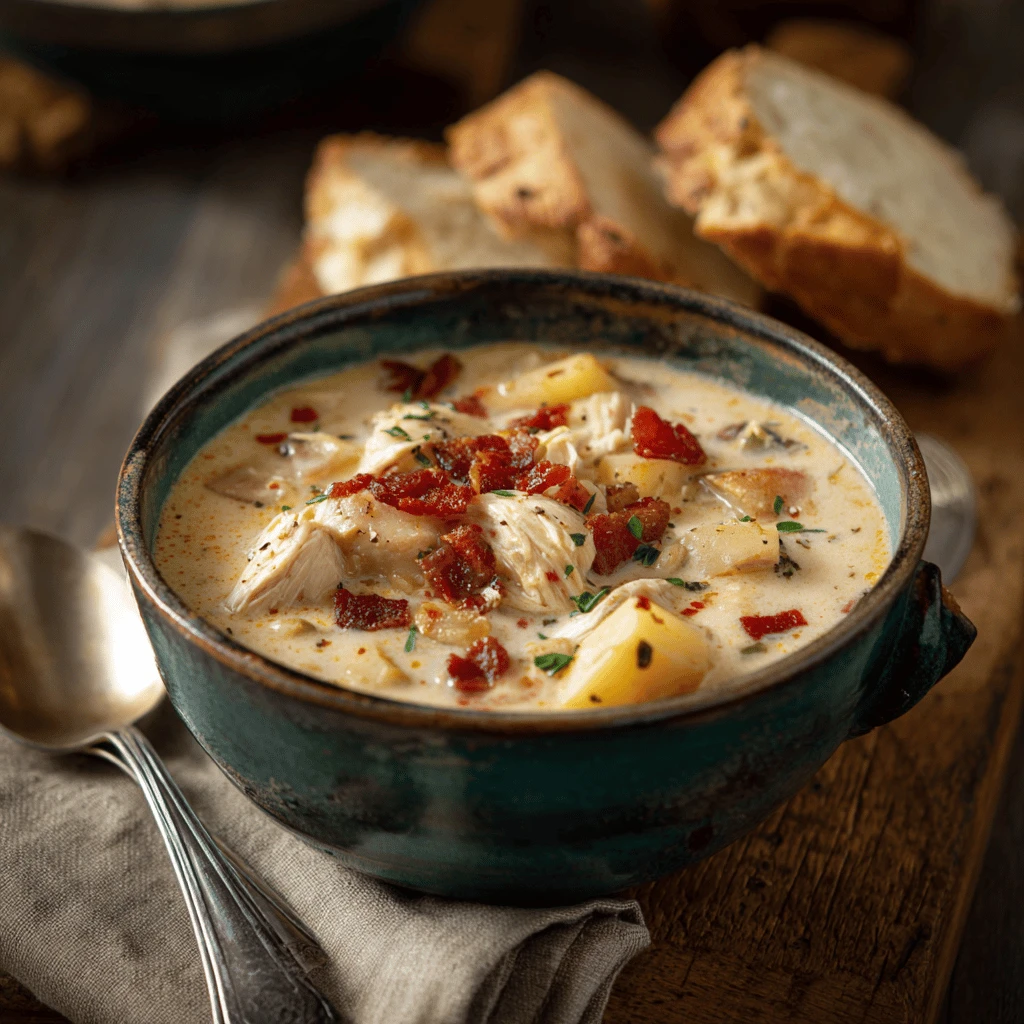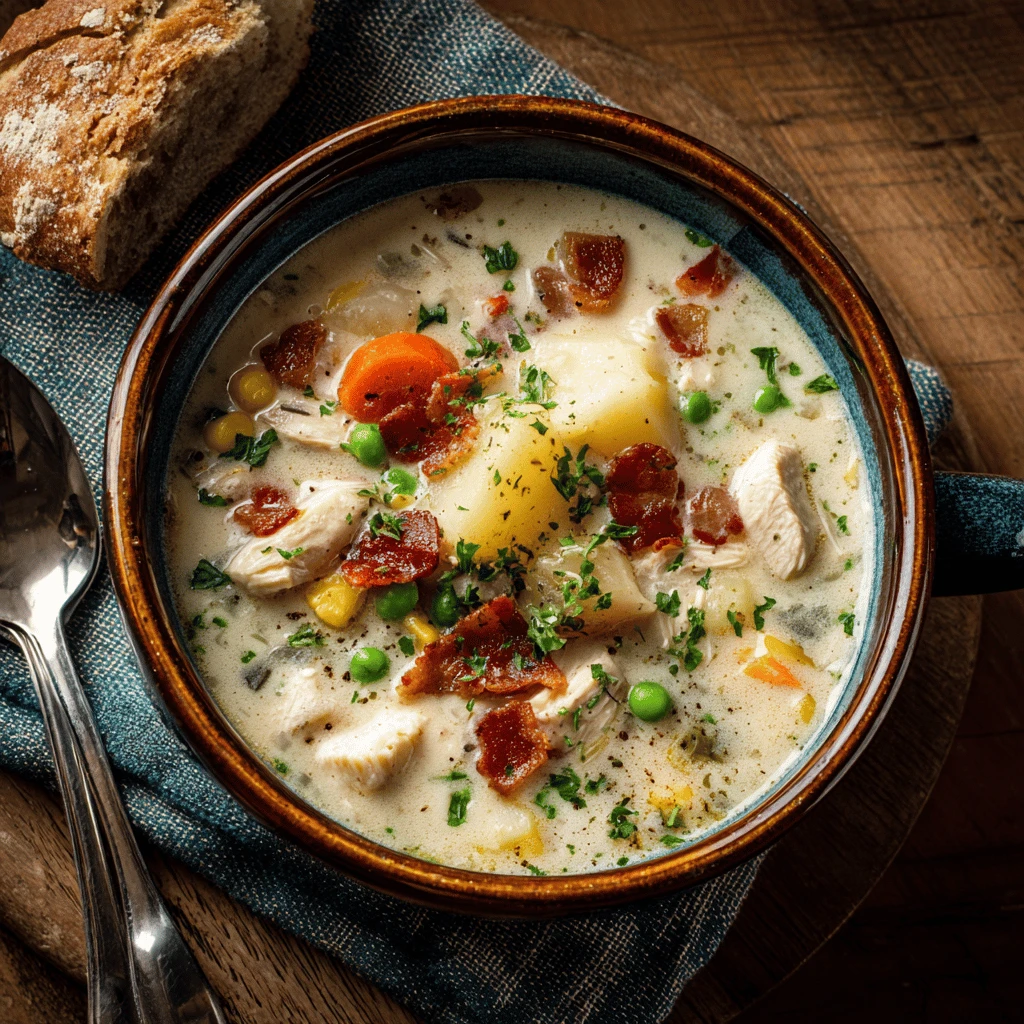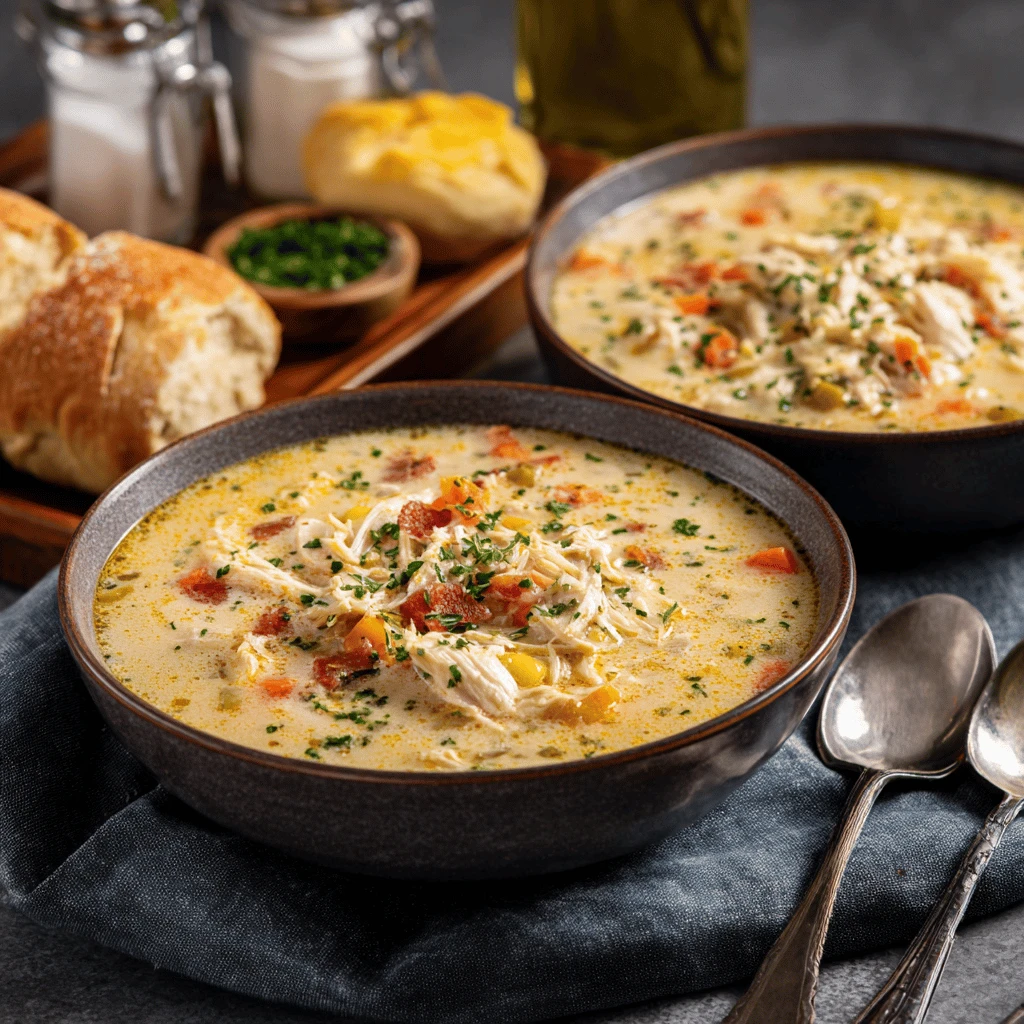Comforting Chicken Chowder
Chicken chowder: the name alone evokes feelings of warmth and satisfaction. This creamy, hearty soup is a beloved comfort food, perfect for chilly evenings or whenever you crave a bowl of pure deliciousness. This article explores the nuances of creating the perfect chicken chowder, delving into ingredient choices, cooking techniques, and variations to suit every palate.
The Heart of the Chowder: Essential Ingredients
The foundation of any great chicken chowder lies in its core ingredients. Let’s examine the key players:
Chicken: This is, of course, the star. Cooked chicken, shredded or diced, provides the protein backbone of the chowder. Leftover roasted chicken is ideal, adding depth of flavor. Poaching chicken breasts specifically for the chowder also works beautifully, allowing you to control the seasoning and tenderness. Consider using chicken thighs for a richer, more flavorful result.
Vegetables: Chowder is all about the symphony of textures and flavors. Potatoes, typically Yukon Gold or Russet, are essential for thickening the soup and providing a hearty base. Celery, onion, and carrots create an aromatic mirepoix, the cornerstone of many savory dishes. Corn, whether fresh, frozen, or canned, adds sweetness and a delightful pop of texture. Other vegetables like leeks or parsnips can also be incorporated for added complexity.
Dairy: Creaminess is key to a satisfying chowder. Milk, cream, or a combination of both are used to achieve the desired consistency. Heavy cream provides the richest, most decadent flavor, while milk offers a lighter option. Consider using half-and-half for a balance between richness and lightness.
Broth: Chicken broth or stock forms the liquid base of the chowder. Homemade broth is always preferable, offering the most nuanced and authentic flavor. However, high-quality store-bought broth can also be used. Opt for low-sodium varieties to control the salt content of the final dish.
Thickening Agent: While potatoes contribute to thickening, additional thickening agents can be used to achieve the desired consistency. Flour, cornstarch, or a roux (a cooked mixture of butter and flour) are common choices. A slurry (a mixture of cornstarch and cold water) is a simple and effective option.
Seasoning: Salt, pepper, and other seasonings elevate the flavors of the chowder. Bay leaves add a subtle herbal note, while thyme or rosemary provide warmth and earthiness. A dash of hot sauce or a pinch of red pepper flakes can add a touch of heat.
Crafting the Perfect Chowder: A Step-by-Step Guide
Now that we’ve covered the essential ingredients, let’s walk through the process of creating a delicious chicken chowder:
1. Prepare the Vegetables: Dice the celery, onion, and carrots. Peel and dice the potatoes. If using fresh corn, cut the kernels off the cob.
2. Sauté the Aromatics: In a large pot or Dutch oven, melt butter or heat oil over medium heat. Add the celery, onion, and carrots and sauté until softened, about 5-7 minutes.
3. Add Broth and Potatoes: Pour in the chicken broth and add the diced potatoes. Bring to a boil, then reduce heat and simmer until the potatoes are tender, about 15-20 minutes.
4. Thicken the Chowder: If using a roux, melt butter in a separate saucepan and whisk in flour. Cook for 1-2 minutes, stirring constantly, to create a smooth paste. Gradually whisk the roux into the simmering chowder. Alternatively, whisk cornstarch with cold water to form a slurry and slowly pour it into the chowder, stirring constantly until thickened.
5. Add Chicken and Corn: Stir in the cooked chicken and corn. Heat through.
6. Stir in Dairy: Reduce heat to low and gently stir in the milk, cream, or half-and-half. Be careful not to boil the chowder, as this can cause the dairy to curdle.
7. Season and Serve: Season with salt, pepper, and other desired seasonings. Remove bay leaves before serving. Garnish with fresh parsley, chives, or crumbled bacon.
Variations and Creative Twists
Chicken chowder is a versatile dish that can be adapted to suit your preferences and dietary needs. Here are a few variations and creative twists to inspire you:
- Spicy Chicken Chowder: Add diced jalapeños or a pinch of cayenne pepper to the chowder for a kick of heat.
- Smoked Chicken Chowder: Use smoked chicken for a deeper, more intense flavor.
- Vegetarian Chicken Chowder: Substitute vegetable broth for chicken broth and add plant-based chicken alternatives for a vegetarian-friendly option.
- Seafood Chowder: Incorporate shrimp, clams, or other seafood for a unique and flavorful twist.
- Potato-less Chowder: Replace potatoes with cauliflower rice for a low-carb option.
- Creamy Tomato Chicken Chowder: Stir in tomato paste or diced tomatoes for a tangy and flavorful variation.
- Adding Bacon: Fry chopped bacon and add it in with the corn and chicken. Use bacon grease to saute the vegetables for added flavor.
Experiment with different ingredients and seasonings to create your own signature chicken chowder recipe.
Tips for Success: Achieving Chowder Perfection
Follow these tips to ensure your chicken chowder turns out perfectly every time:
- Don’t Overcook the Potatoes: Overcooked potatoes can become mushy and break down in the chowder. Cook them until they are tender but still hold their shape.
- Avoid Boiling the Dairy: Boiling the dairy can cause it to curdle and separate. Gently heat the dairy through over low heat.
- Taste and Adjust Seasoning: Taste the chowder throughout the cooking process and adjust the seasoning as needed.
- Use High-Quality Ingredients: The quality of your ingredients will directly impact the flavor of the chowder. Choose fresh, high-quality ingredients whenever possible.
- Let it Simmer: Simmering the chowder allows the flavors to meld together and deepen. Don’t rush the process.
- Garnish Generously: A sprinkle of fresh herbs, crumbled bacon, or a drizzle of hot sauce can elevate the flavor and presentation of the chowder.
Serving and Storing Your Chicken Chowder
Chicken chowder is best served hot, garnished with your favorite toppings. It pairs well with crusty bread, crackers, or a side salad.
Storage: Leftover chicken chowder can be stored in an airtight container in the refrigerator for up to 3-4 days. Reheat gently over low heat, stirring occasionally.
Freezing: Chicken chowder can be frozen for up to 2-3 months. However, the texture of the potatoes and dairy may change slightly after freezing. To minimize texture changes, cool the chowder completely before freezing and thaw it slowly in the refrigerator.
Frequently Asked Questions About Chicken Chowder
Why is my chicken chowder watery?
A watery chicken chowder usually indicates not enough thickening agent. You can add a cornstarch slurry (cornstarch mixed with cold water) to thicken it. Make sure to stir constantly as you add it and bring the chowder to a simmer.
Can I make chicken chowder in a slow cooker?
Yes, you can make chicken chowder in a slow cooker. Add all ingredients except the dairy to the slow cooker and cook on low for 6-8 hours. Stir in the dairy during the last 30 minutes of cooking.
What’s the difference between chowder and soup?
Chowder is typically thicker and creamier than soup, and it often contains potatoes. Soup can be broth-based or creamy, and it can contain a wide variety of ingredients.
Can I use rotisserie chicken in chowder?
Absolutely! Rotisserie chicken is a great shortcut for chicken chowder. It adds a smoky flavor and saves time.
What can I serve with chicken chowder?
Chicken chowder pairs well with crusty bread, crackers, a side salad, or a grilled cheese sandwich.




